The 2023/24 campaign has not been the return to English football’s top flight that Sheffield United were hoping for. The sale of arguably their two best players just prior to the season starting laid the groundwork for a pretty woeful time of it.
Although the return of club legend Chris Wilder did bring about some grittier performances, the red side of Sheffield is preparing for life back in the Championship next season.
It’s no secret that Sheffield United’s financial situation is far from ideal, meaning simply dipping into the transfer market for Premier League-quality players is almost impossible. Consequently, Chris Wilder has turned to the youth system during the latter stages of the current campaign, and it might just prove to be one of the best decisions he has made.
Ollie Arblaster has broken through into the first team and has quickly established himself as a fan favourite with his performances. The young midfielder spent the first half of the season on loan at League One side Port Vale. However, upon Wilder’s return to The Blades, he was quickly recalled as it appeared he was quite clearly in the manager’s plans for the first team.
His creativity and dynamic performances have been on show throughout his recent performances. It has become clear that Arblaster has a big future ahead and could be the linchpin Sheffield United need to build around next season.
This tactical analysis will analyse the unique skillset of Sheffield United’s exciting young midfielder. We will highlight what Arblaster brings to Chris Wilder’s tactics and why we think he has the potential to be such an important player for The Blades, especially with the possibility that Oliver Norwood will depart the club.
Forged in steel
Ollie Arblaster joined the Sheffield United Academy at the age of six and climbed through the age groups before being offered a professional contract. The youngster then went out on loan to Bradford Park Avenue at the beginning of the 2021/22 season.
He put in some impressive performances out on loan and was recalled by then-manager Paul Heckingbottom. Despite being included in two match-day squads, Arblaster didn’t make his Sheffield United debut until the following season in an EFL Cup game against West Brom.
Arblaster made a couple of appearances during The Blades 2022/23 promotion-winning campaign and was deemed too useful to go out on loan, as the club feared an injury crisis may develop.
In July 2023, Arblaster agreed to join Port Vale on a season-long loan. The Sheffield-born starlet made an instant impact and became a key player in The Valiants midfield.
Chris Wilder then recalled the young midfielder and handed him his Premier League debut, coming on as a substitute in Sheffield United’s 6-0 loss to Arsenal. He was then named in the starting lineup five days later in the 2-2 draw against AFC Bournemouth.
Gaining experience at Port Vale
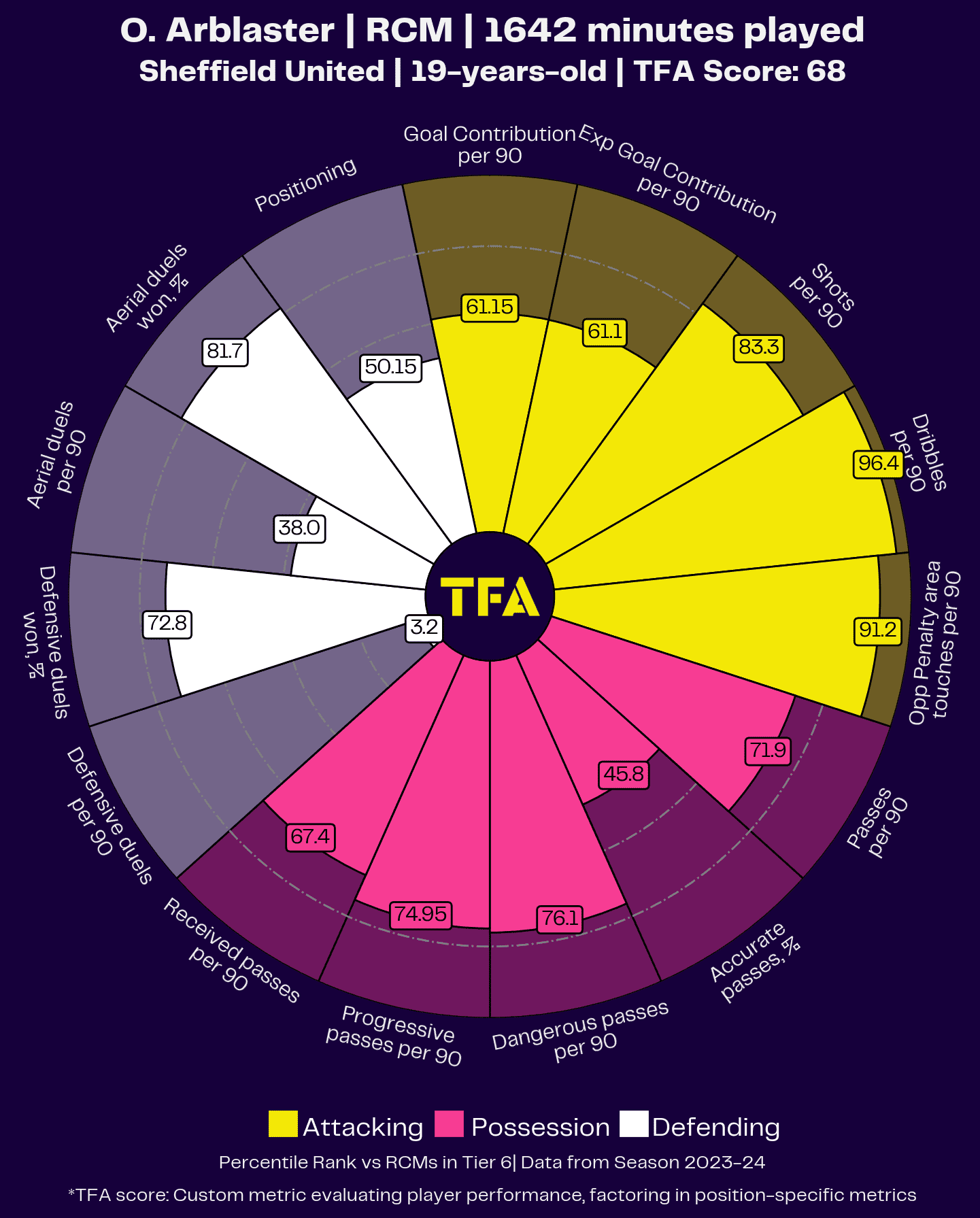
The pizza chart allows us to see how well Arblaster performed at Port Vale in League One, which is classed as a Tier 6 league in the TFA tier system. The then-manager Andy Crosby favoured a 3-4-2-1 or 3-4-3 system, which saw Ollie Arblaster line up as a central midfielder.
Firstly, we can see how well Arblaster performed in terms of his attacking output while at Vale Park. He averaged 4.66 dribbles per 90 minutes, which made him one of the top performers compared to fellow players in the same position.
From this, we can infer that he is a player who likes to drive forward with the ball. This is a facet of his game which is very useful in the attacking transition and could potentially set Arblaster apart from his peers.
Furthermore, due to how highly he ranks in terms of touches in the opposition penalty area, it is possible that Arblaster often looked to carry the ball into the box and create goal-scoring opportunities for himself or his teammates.
Additionally, we can see that Arblaster performed reasonably well regarding his passing. He averaged 7.02 passes to the final third, which shows his progressive style of play and forward-thinking passing. His passing accuracy was perhaps lower than we would expect. However, this could be influenced by factors such as the types of passes he was playing and, of course, the lower percentage of passes that were more likely to be intercepted.
Moreover, although Arblaster didn’t engage in too many defensive duels, of those that he did participate in, he did have a reasonably high win percentage. This suggests that he provided Port Vale with a physical presence in the centre of the pitch.
In this next section of the scout report, we will focus on what Ollie Arblaster adds to the current Sheffield United team and how they can build around him next season in the Championship.
In possession: A technical driving force
A player we class as the midfield engine is essentially the team’s heartbeat pulsating with energy and control in the centre of the pitch. It’s that player who orchestrates the game from the middle, dictating the tempo, breaking up opposition attacks, and initiating their team’s moves forward.
Arblaster can play this role for Sheffield United thanks to his intelligent movement, wonderful technical traits, and sheer determination in the middle of the park.
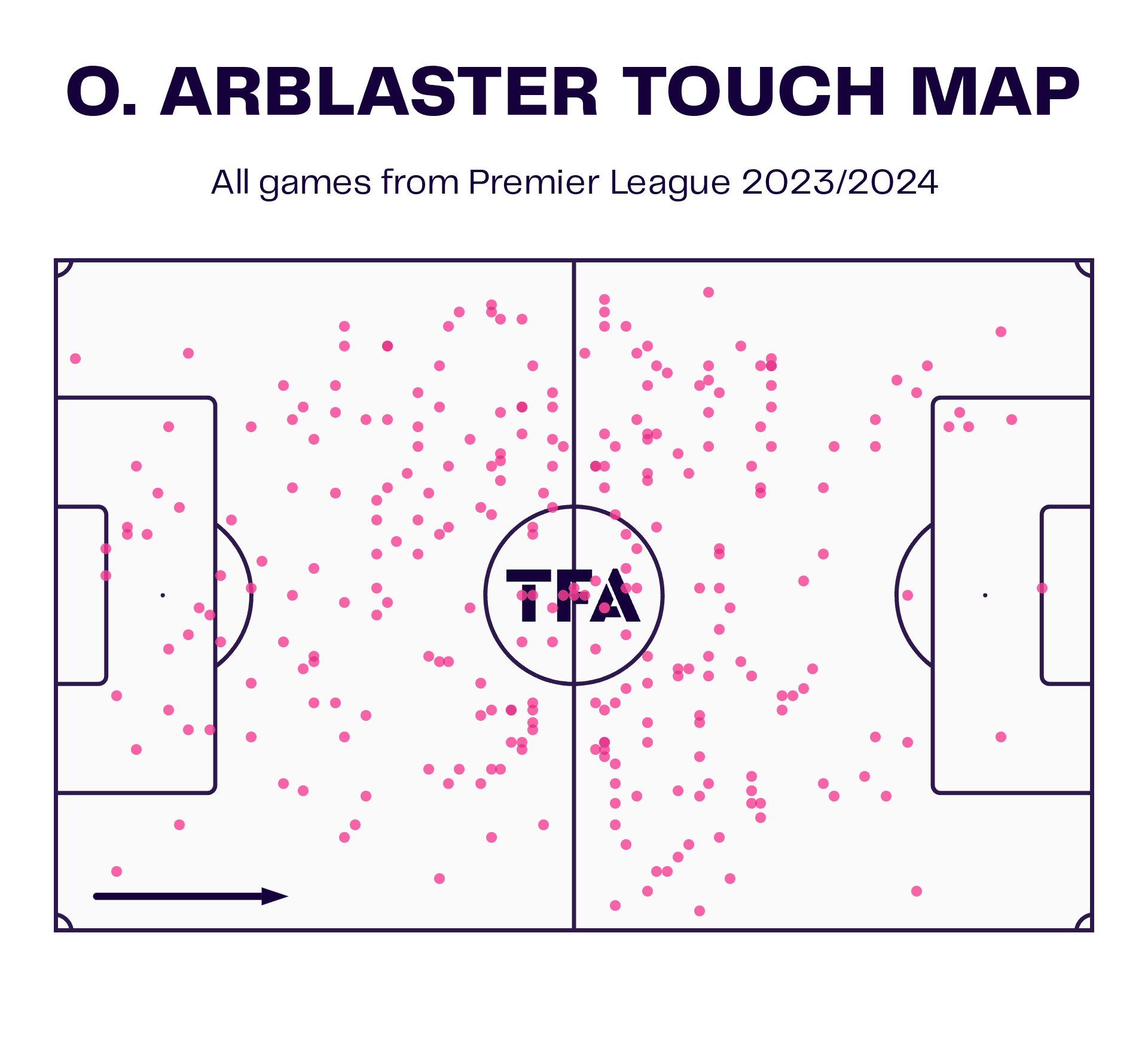
The touch map above allows us to understand how Arblaster operates on the pitch. The young midfielder is not about flashy skills or scoring goals, although he can certainly do that, too. Rather, he can act as the glue that holds the team together, linking defence to attack seamlessly.
Given that Sheffield United often endure periods of sustained pressure from the opposition, it is no surprise to see a high number of touches from Arblaster in his own half. However, we can also see that the 20-year-old likes to get forward into the opposition half and impact the game from an attacking perspective.
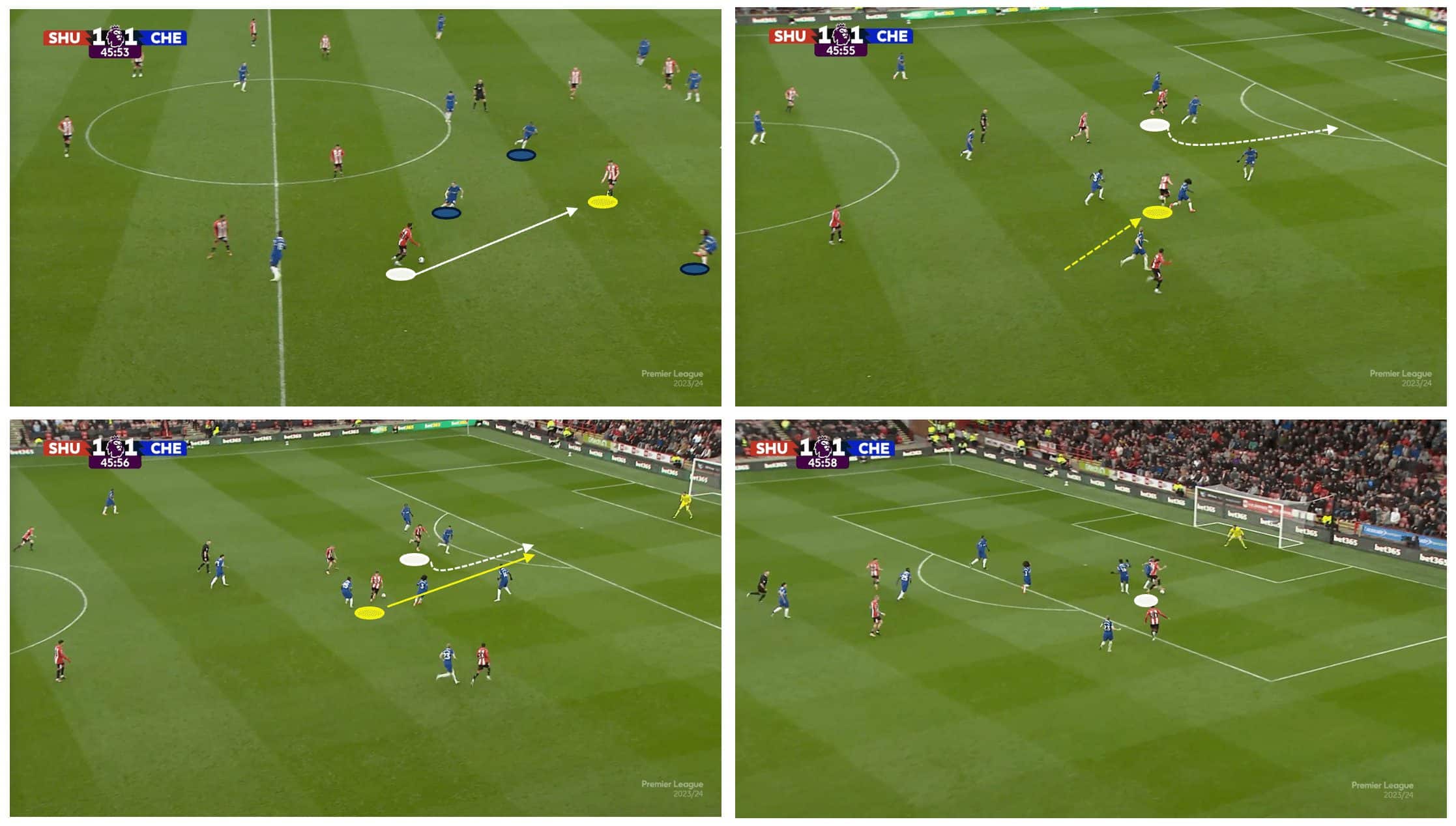
In this instance, we can see Arblaster’s off-the-ball movement into a pocket of space so he can then receive the ball. He has great awareness and adapts his movement, meaning he is able to control the pass while simultaneously turning away from the opponents who are looking to put him under pressure.
Arblaster’s instinct is to drive forward; this ability to penetrate the opponent’s defensive line creates space and opportunities for Sheffield United to attack. By carrying the ball forward, the midfielder can break through defensive structures, as we can see here.
Additionally, when he carries the ball forward, it forces opposition defenders to engage and close him down. This opens up passing lanes and creates gaps in the defensive shape, which can be exploited by teammates making runs or finding pockets of space.
We can see that Ben Brereton-Díaz is on the same wavelength as Arblaster on this occasion and complements the midfielder’s driving run forward with a well-timed run into the box of his own. Arblaster sees his run and plays a nicely weighted pass into his path.
Furthermore, driving runs from midfield inject a sense of directness and urgency into the team’s attacks. By bypassing multiple opponents, the midfielder can quickly transition the team from defence to attack, catching the opposition off guard and creating goal-scoring opportunities.

Perhaps one of the most important aspects of the young Blades midfielder is how he very often sets the tone for the team. Despite his young age, Abrlaster leads by example with his work rate and commitment.
On this occasion, Sheffield United plays a long ball forward to Oli McBurnie, who heads it down into space. Arblaster is the first player to react. He charges forward and battles with the opponent to gain control of the ball.
He then creates a shooting opportunity for himself pretty much out of nothing. In typical Ollie Arblaster fashion, he charges forward with the ball at his feet, using his physical strength to hold off the opposition. With no teammates up in support, the 20-year-old takes a shot at goal himself and forces a save from the Bournemouth goalkeeper.
Throughout games, he consistently drives forward and poses a threat to the opposition’s defence. Arblaster’s dynamism pressures the opposition, often forcing them to adjust their defensive tactics to contain him. This, of course, can create openings and opportunities for other Sheffield United players, leading to increased scoring chances.
Arblaster not only adds a potent attacking dimension to Sheffield United’s play but also creates space and scoring opportunities for his teammates through his individual efforts. His ability to break through defensive lines, draw defenders towards him, and create chances out of nothing can be a game-changer and will certainly be a valuable asset to the team going forward.
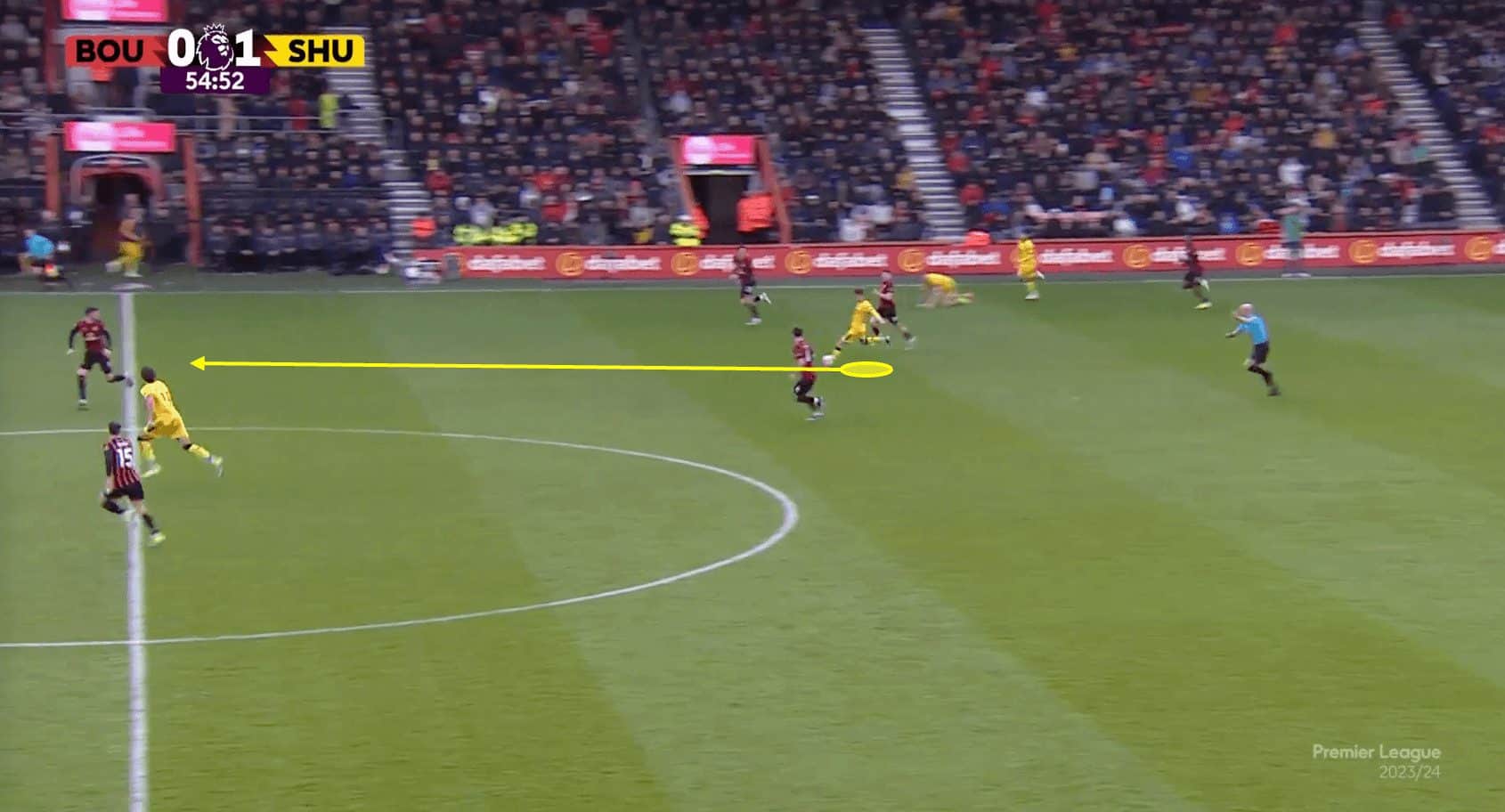
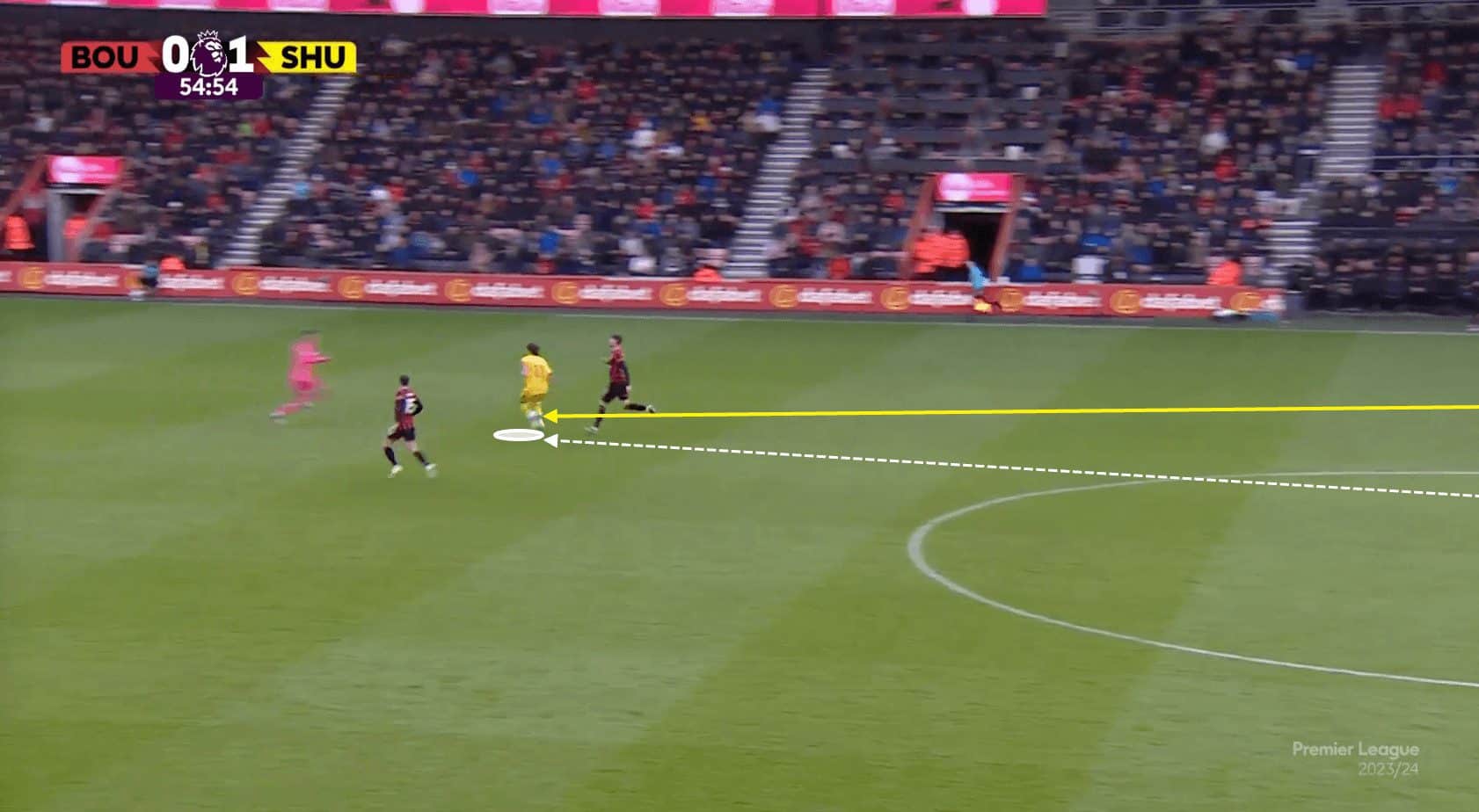
Arblaster’s passing ability enables him to quickly distribute the ball forward, bypassing opposition midfielders and initiating attacking moves, as we can see here. He facilitates a seamless transition that catches opponents off guard and exploits spaces in their defensive setup.
Here, Arblaster showcases his excellent vision as he reads Brereton-Díaz’s movement and plays a forward pass into his path. His ability to distribute the ball quickly and accurately under pressure provides an outlet for the Sheffield United defence and means he can launch counterattacks aiming to catch the opposition off guard and capitalise on transition opportunities, turning defensive situations into attacking threats.
The Bladesman averages an 83.5% pass accuracy rating in the Premier League so far this season and plays 2.13 long passes per 90, which is a vital aspect of Sheffield United’s transitional style.
Moreover, his ability to switch play from one side of the pitch to the other with long-range passes stretches the opposition’s defence, creating gaps for his teammates to exploit and facilitating swift attacking transitions.
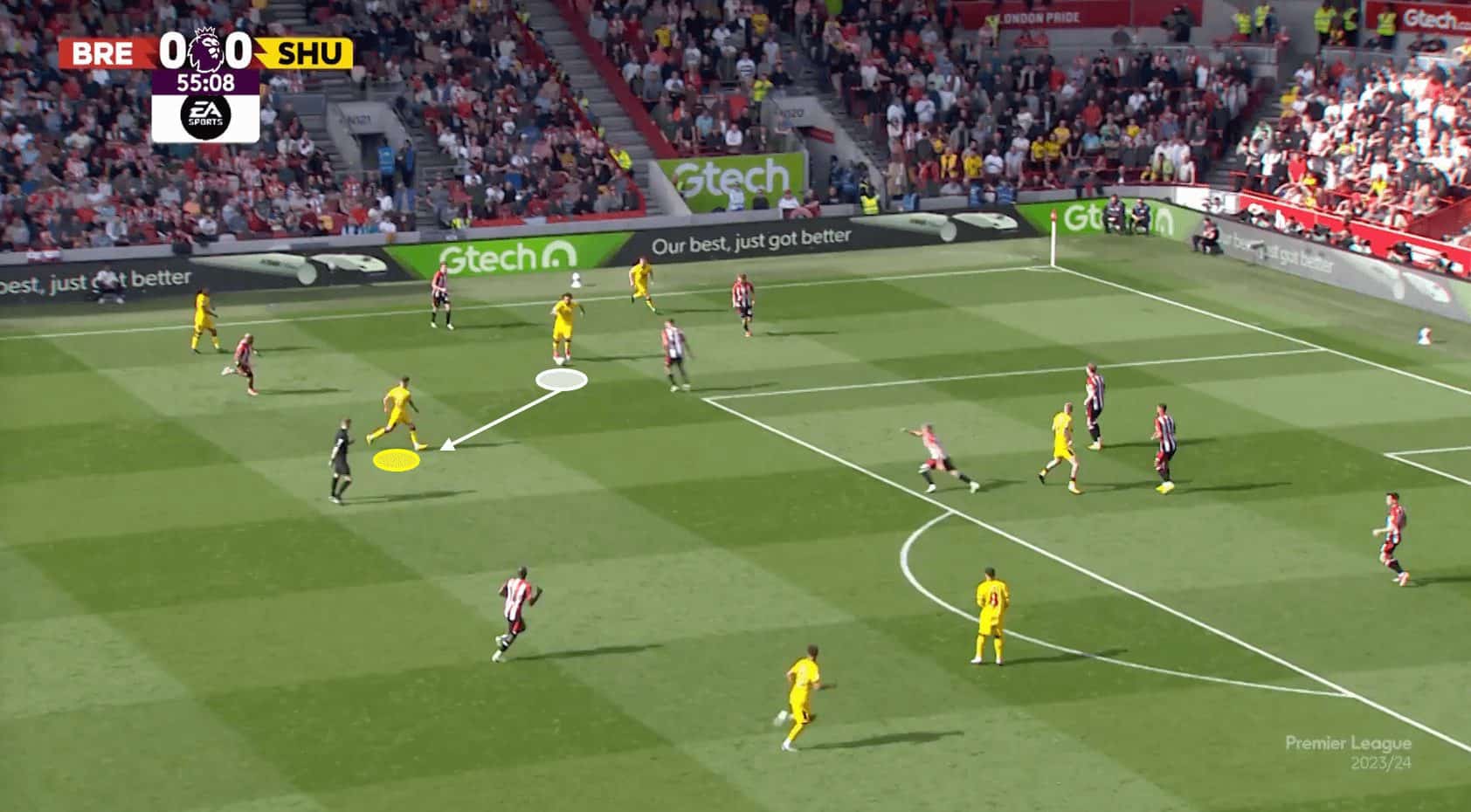
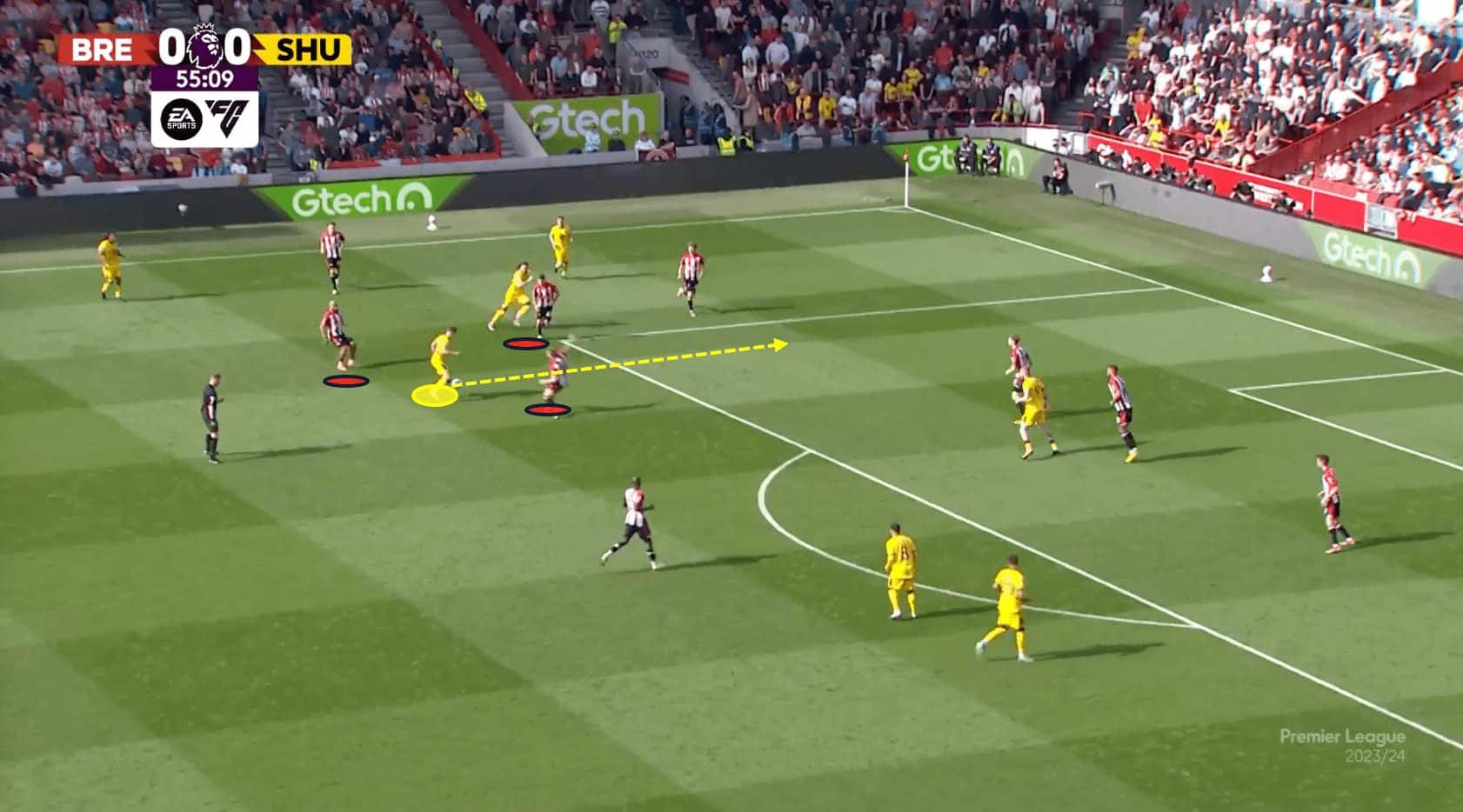
In addition to acting as the driving force to push Sheffield United up the pitch, Arblaster is always looking to get involved in the attacking third. Here, he receives the ball on the edge of the area and can manoeuvre his way beyond three Brentford players closing him down.
Another aspect of his play is his willingness to use both feet. Although he prefers his right, in this instance, he drives forward and then looks to put a cross in with his left foot. This adds to Arblaster’s attacking threat as it makes it increasingly difficult for defenders to know which way he is going to travel with the ball.
The former Port Vale loanee is incredibly agile and can weave his way through tight spaces with relative ease. This is hugely beneficial due to the fact that when he sees open space ahead, Arblaster’s natural instinct is to move into it.
He consistently looks to provide an attacking threat for his team. On this specific occasion, his attempted cross was blocked, but his presence in the attacking third is usually a dynamic one, something Sheffield United have lacked throughout the current season.
Out of possession: Off-the-ball excellence
Of course, as a midfielder, Arblaster’s work out of possession is equally as important. The Lionesses captain Leah Williamson likened the experience of playing in midfield to constantly needing to have her head on a swivel because she needs to constantly be aware of what’s going on in all directions. This is something that Arblaster does very well, as we will discuss in this section of the analysis.
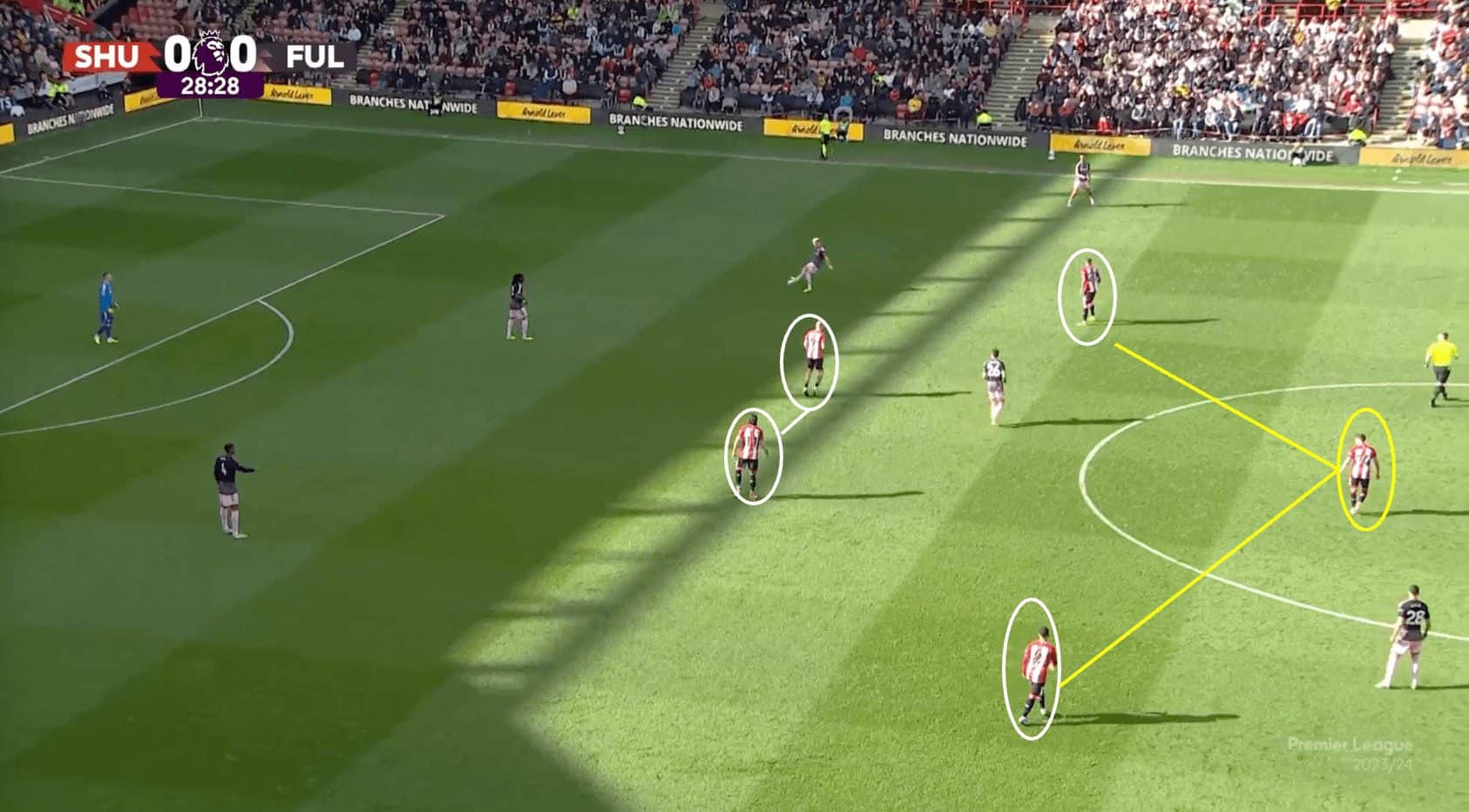
Chris Wilder famously prefers a 5-3-2 shape in the defensive phase, something which he has reimplemented since his return to Bramall Lane. Additionally, he has tried to improve The Blades’ defensive fortunes by making them more compact and tougher to break down.
In this example, we can see the midfield and forward lines; Arblaster is highlighted as being at the base of the midfield trio, with Vini Souza and Gus Hamer on either side of him.
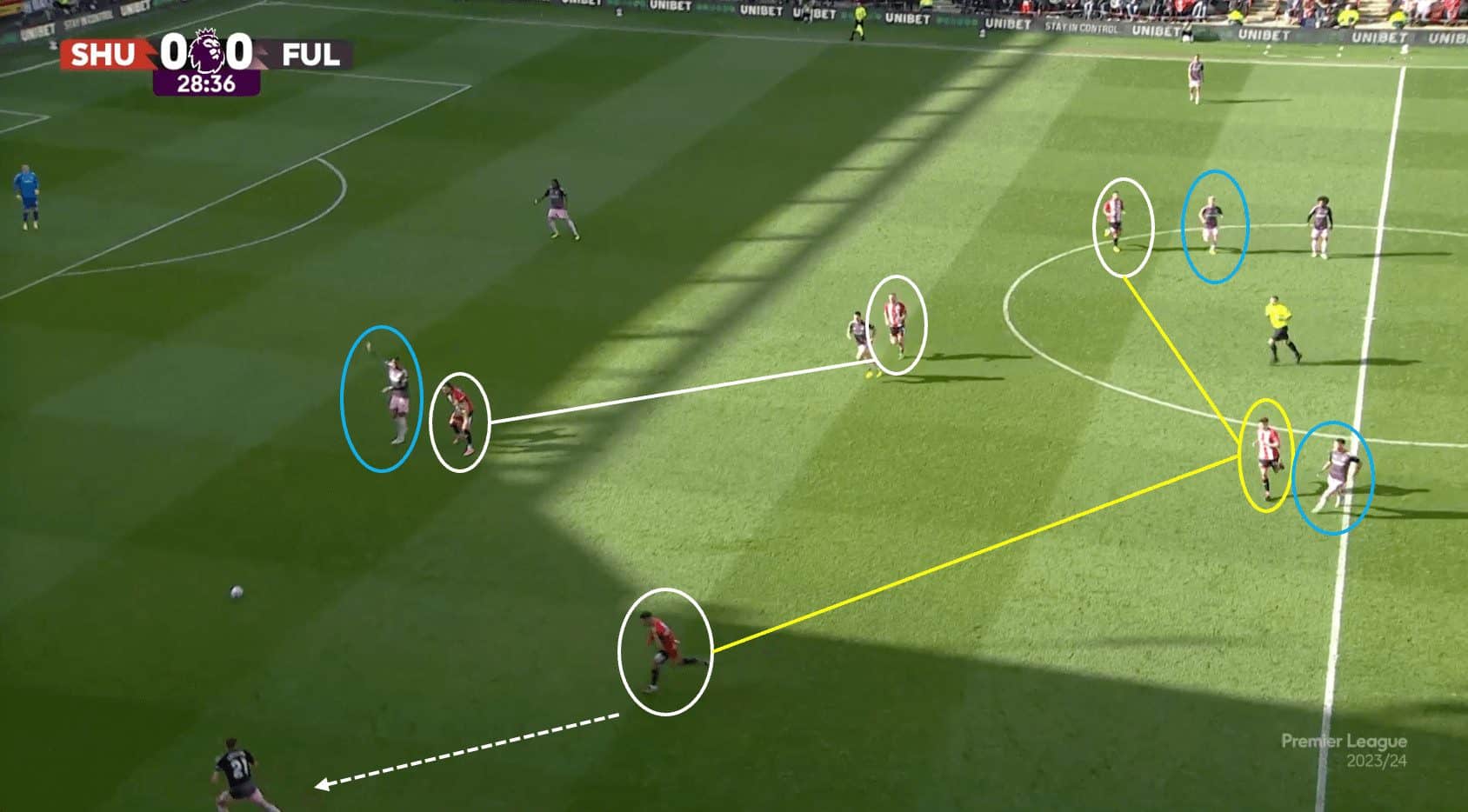
Here, we can see how the whole unit moves together in a bid to prevent Fulham from playing out of defence. Sheffield United look to close off passing lanes and then close down their opponents, looking to force a turnover high up the pitch.
The 20-year-old shows a wonderful level of maturity in his movement around the pitch, and as we can see here, he sticks closely to his opponent, ensuring the passing lane remains closed off while Hamer looks to press.
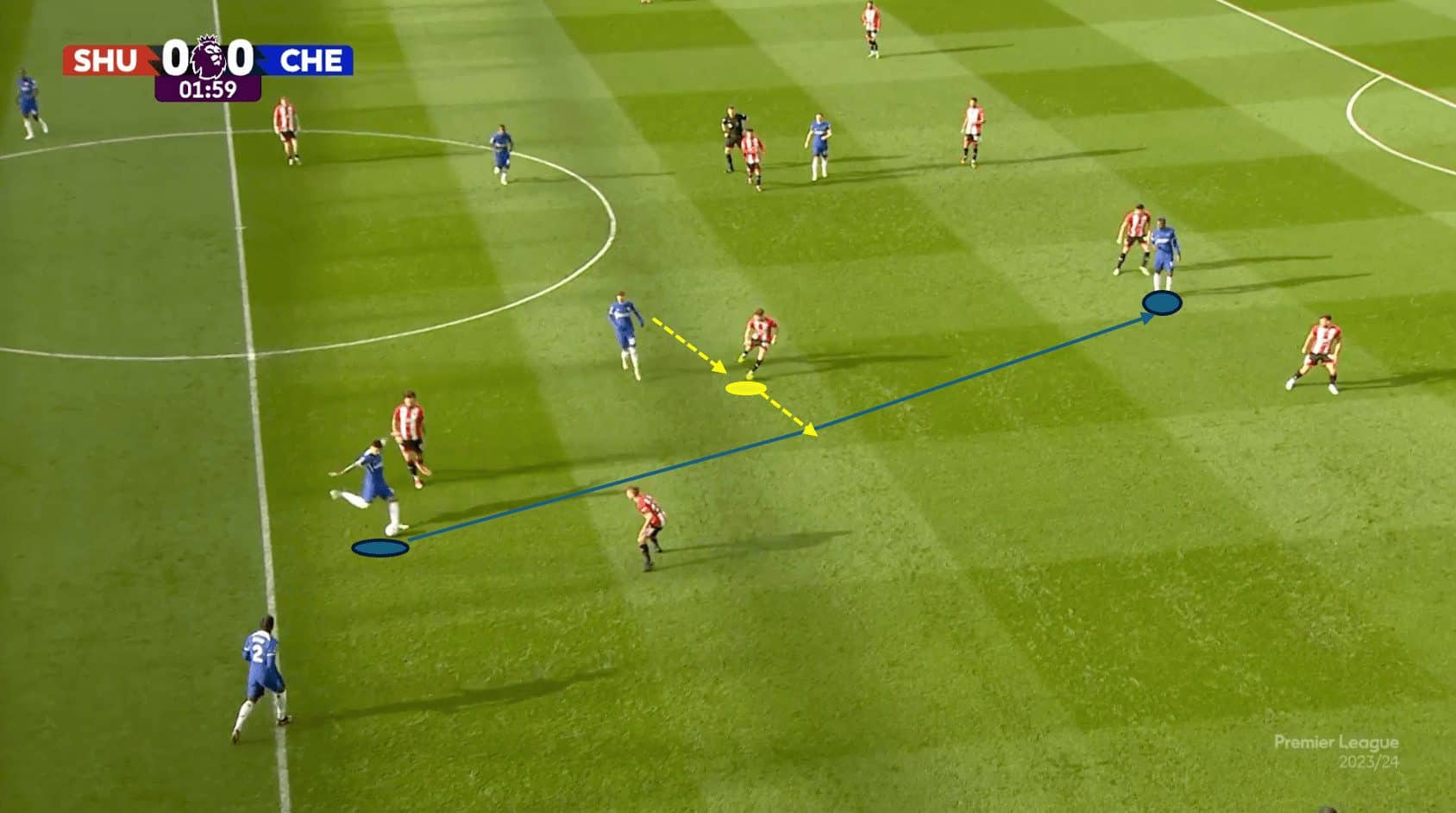
Arblaster looks to do this right from the off. Two minutes into the game against Chelsea, he is alert and, in this instance, moves into position to block the open lane and intercept the pass.
By intelligently positioning himself to close down passing lanes, he puts pressure on the opponent and can force them to make poor decisions. This disrupts the opponent’s rhythm and can bring a sense of uncertainty to their attacking play.
Since making his Premier League debut, Arblaster has averaged 3.9 interceptions per 90, demonstrating how important he has become in the middle of the park for his team.
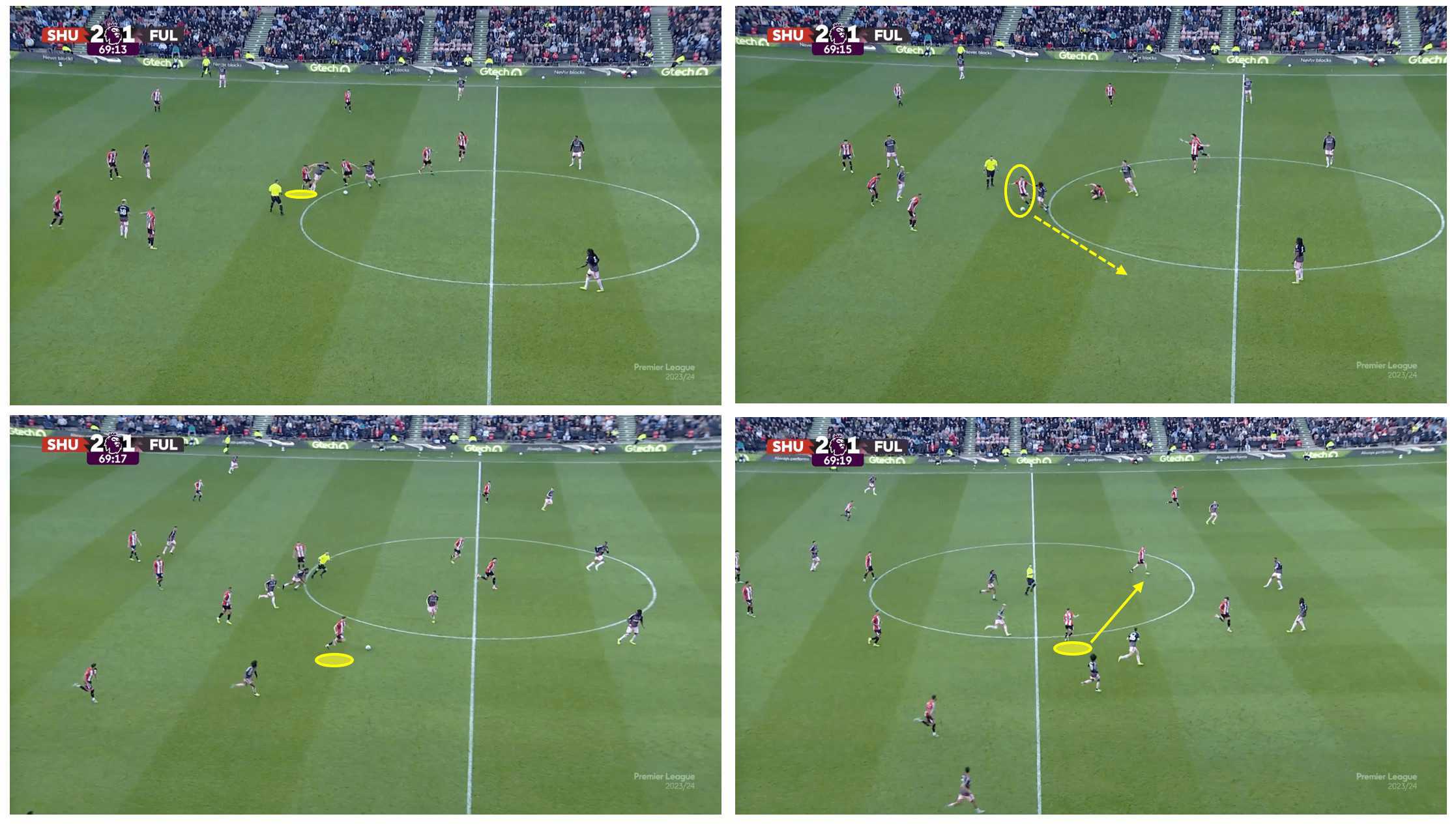
Furthermore, Ollie Arblaster adds a physical presence to Sheffield United’s midfield, as shown here. He is a very strong player who knows how to use his body to battle in shoulder-to-shoulder duels with his opponent.
He averages 8.5 recoveries per 90, allowing Sheffield United to assert a higher level of control over the game’s tempo and momentum, preventing the opposition’s attacking threats before they materialise.
Arblaster has the defensive knowledge and understanding to serve as a linchpin for their team’s overall defensive organisation and strategy. His impressive tactical intelligence and physical presence not only disrupt the opponent’s play but also set the tone for Sheffield United’s defensive efforts.
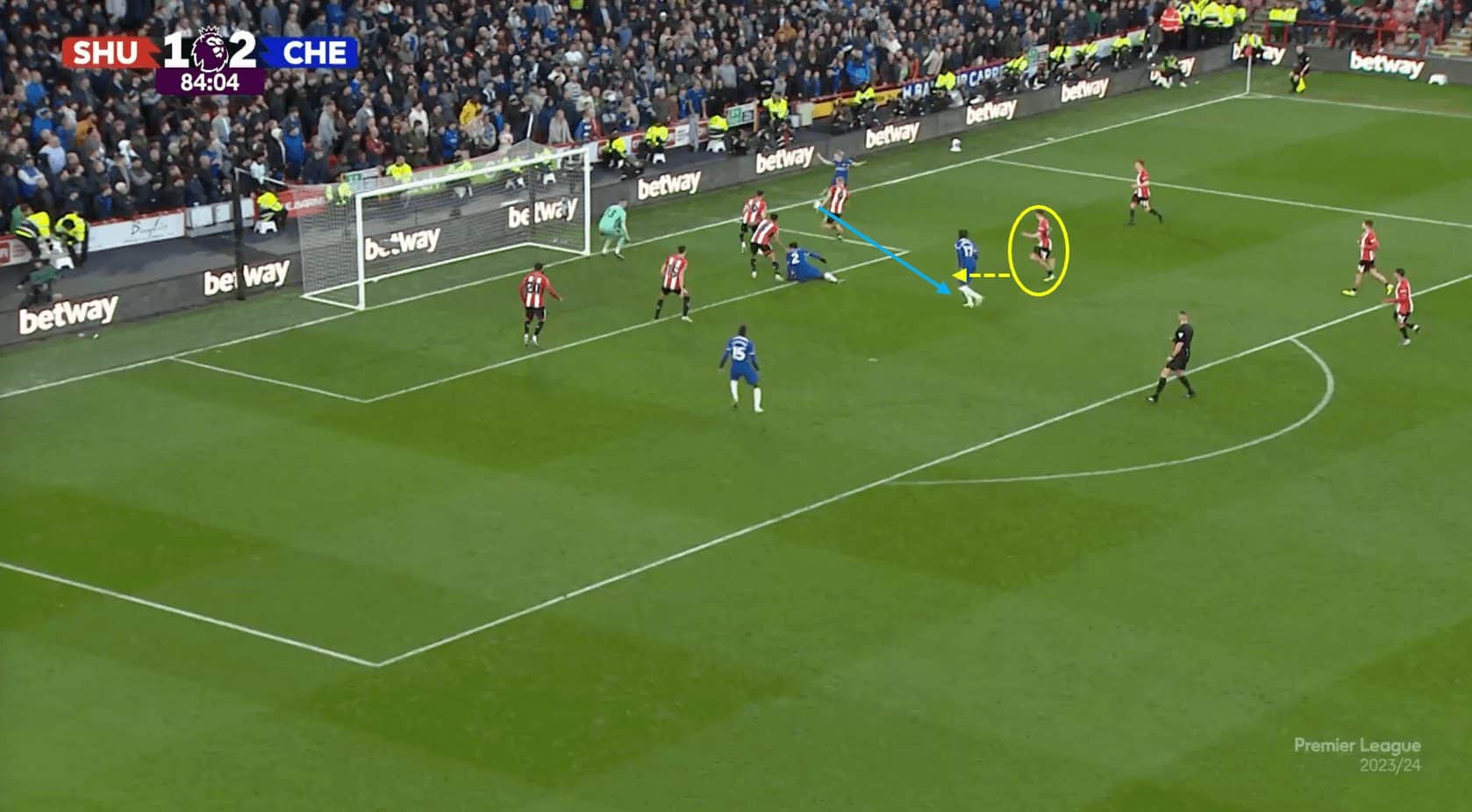
Moreover, Arblaster tracks back throughout the game, sticking closely to his opponent. In this instance, he follows his man into the Sheffield United penalty area and intercepts the cutback, preventing a clear shooting opportunity for Chelsea.
The midfielder frequently displays his exceptional work ethic and desire to do the hard graft. His determination contributes significantly to both the defensive and offensive phases of the game.
Defensively, his tireless tracking back prevents the opposition from creating shooting opportunities in dangerous areas. Plus, his relentless closing down of the opponents and covering of passing lanes provide a solid defensive shield for United as they attempt to nullify the opponent’s attacking threats.
Transitions: Effectiveness in motion
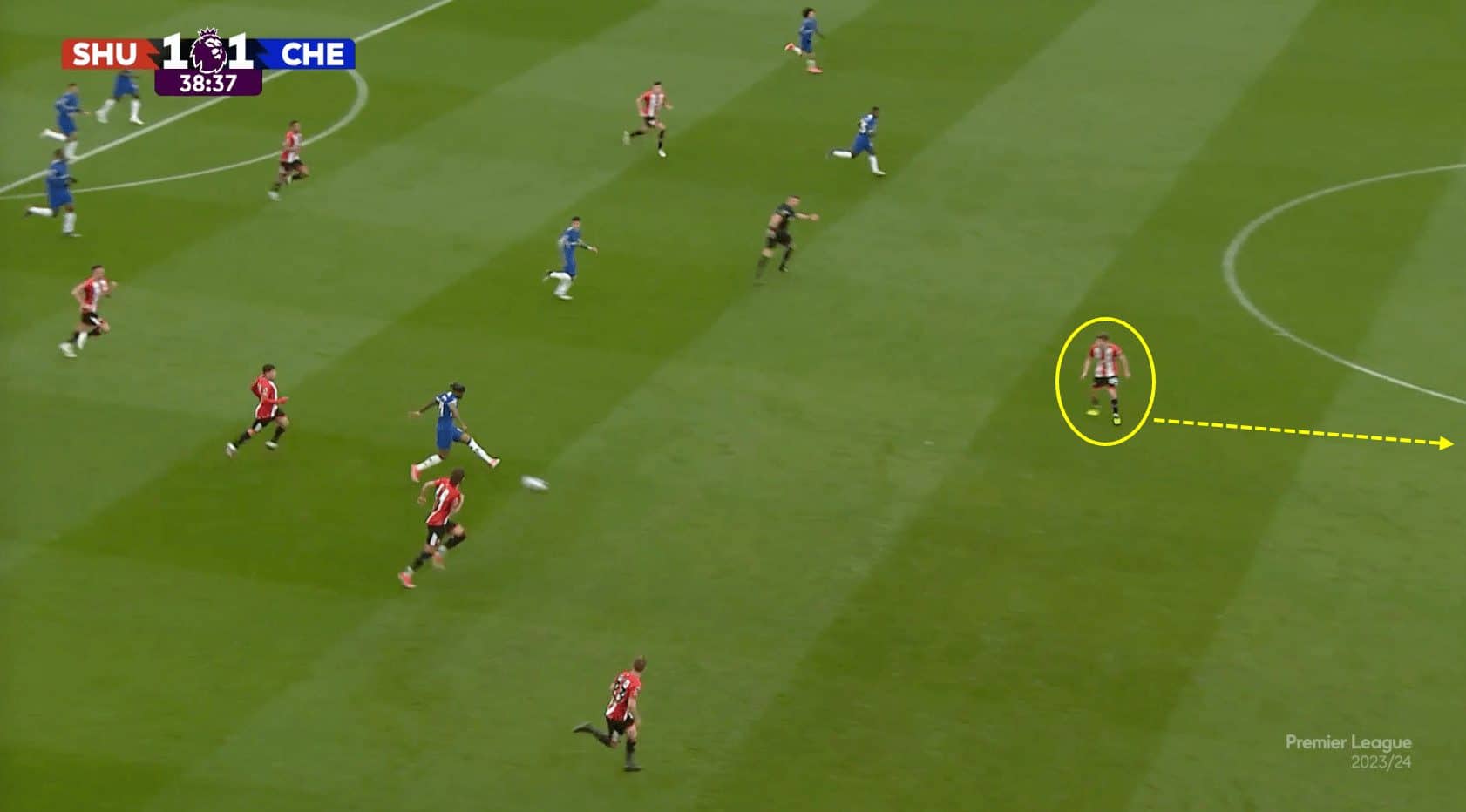

Arblaster’s tactical intelligence and physicality are crucial when Sheffield United are in transition phases. In this example, we can see how Arblaster provides some important covering depth when in the defensive transition.
Recognising that Chelsea are on the attack and his teammates are caught out of position, he quickly tracks back and acts as a temporary central defender to prevent the opponent from simply carrying the ball straight into the penalty area.
His proactive approach alleviates pressure on his teammates and allows them time to get back into their defensive structure. Furthermore, this demonstrates how Arblaster takes responsibility in games and affirms his commitment to the team’s defensive efforts.
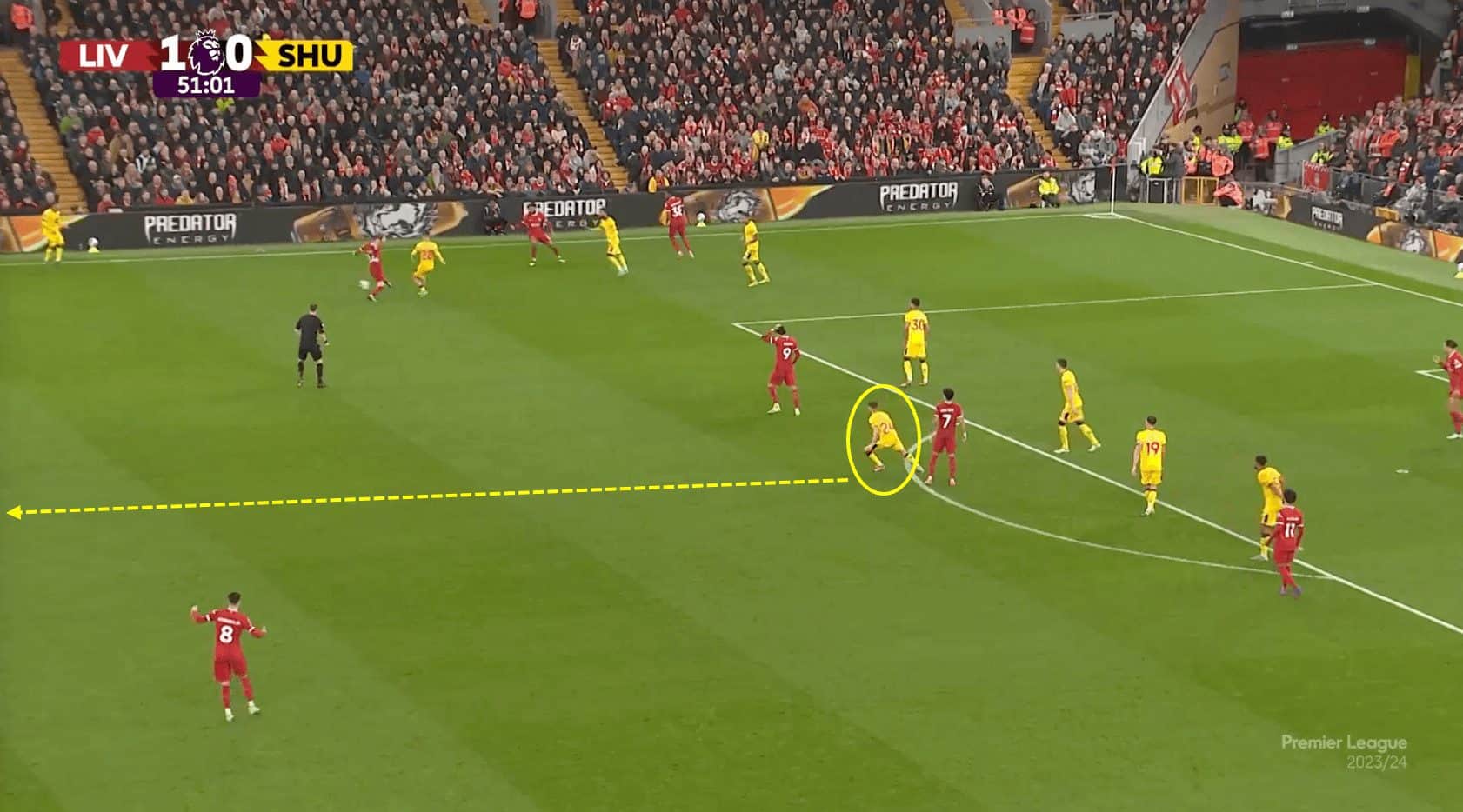
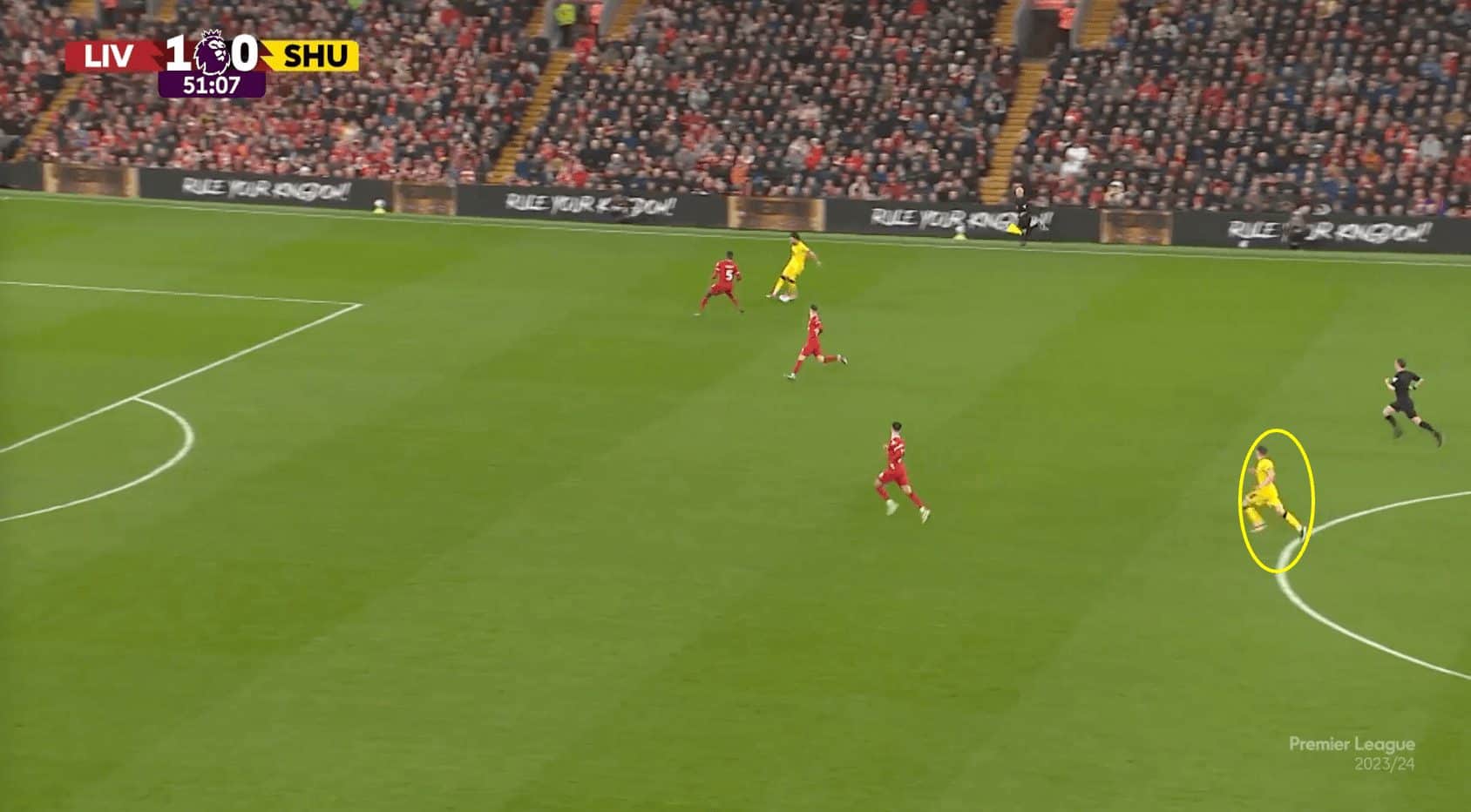
Whilst we have already mentioned Arblaster’s physical strength, we have yet to mention his speed. The young midfielder has an excellent burst of acceleration, which is often put to good use in the attacking transition.
We can see the United midfielder positioned on the edge of the box when his team are in the defensive phase. When Arblaster sees his teammates recovering possession, he immediately puts the afterburners on and charges forward.
We can see that Arblaster is the only Sheffield United player up in support of Ben Brereton-Díaz, who is attempting to hold the ball up. The Blades academy graduate has pace to burn and, as a result, can quickly transition from defence to attack both with and without the ball.
Conclusion
In conclusion, this analysis has shown why Ollie Arblaster has emerged as a standout talent for Sheffield United. His technical skills, such as his wonderful ball-carrying abilities, passing proficiency and chance-creating traits, underscore his ability to influence the game in the attacking phase.
Furthermore, Arblaster’s tactical intuition shines through in his astute positioning, intelligent movement off the ball, and decision-making on the pitch, demonstrating his remarkable understanding of the game’s nuances.
Meanwhile, we have seen how his impressive speed and agility allow him to cover ground swiftly, track back defensively, and contribute to offensive transitions with rapid bursts of acceleration.
Ollie Arblaster epitomises everything that Sheffield United fans want from their team. He’s not a flashy midfielder; you probably won’t see him doing four or five stepovers as he takes on three opponents for the sake of it. Of course, as we have established, he has some wonderful technical abilities that certainly make him stand out on the pitch.
Beyond that, though, the 20-year-old plays with that Steel City grit and determination the club has been missing throughout much of the current campaign. With life in the Championship on the horizon, Ollie Arblaster must be the heartbeat of this Sheffield United team going forward.
In Arblaster, Chris Wilder has a young player who he can build around and will push the team forward with his footballing abilities, work ethic and, of course, his connection with the fans.
As he continues to hone his talents and refine his game, Arblaster’s potential for growth and development appears boundless, making him a valuable asset for Sheffield United as he has the potential to thrive on the big stages sooner rather than later.

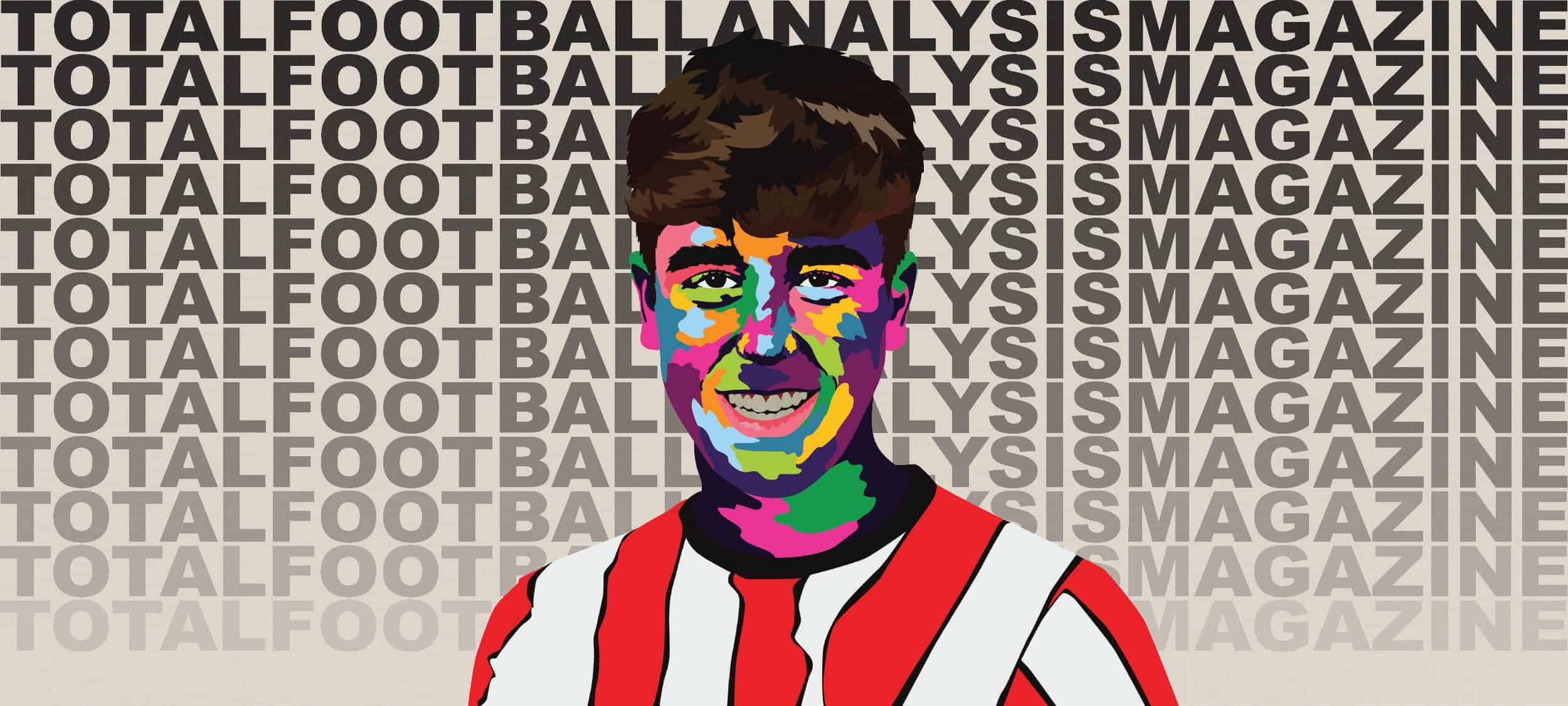



Comments